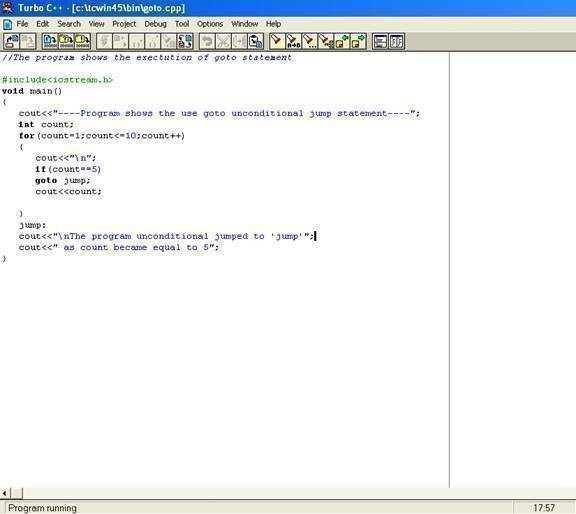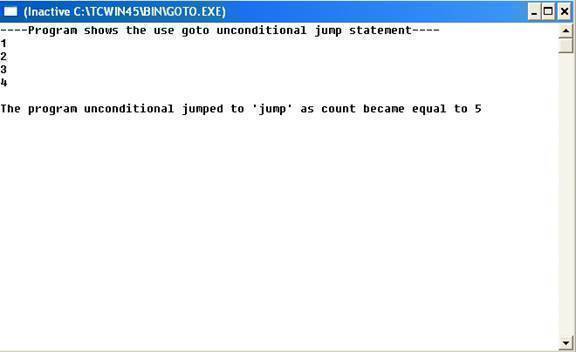goto Statement
In programming, significance has always been given to use of structured programming technique to build reliable software that are easy to debug, maintain and modify. In some cases, performance is more important than strict obedience to structured programming technique. In these cases, some unstructured programming technique may be used.
For example, we can use break to terminate execution of a repetition structure before the loop continuation condition becomes false. This saves unnecessary repetition of the loop if the task is completed before loop termination.
Another instance of unstructured programming is the use of goto statement, which is an unconditional branch. The result of the goto statement is a change in the flow of control of the program to the first statement after the label specified in the goto statement. A label is an identifier followed by a colon (:). A label must appear in the same function as the goto statement that refers to it.
Example: Program to show the execution of goto statement

Output:

The goto statement can be used to exit deeply nested control structures efficiently.
It should be used only in performance oriented applications. It is unstructured and can lead to programs that are more difficult to debug, maintain, and modify.


Comments - No Responses to “goto Statement”
Sorry but comments are closed at this time.